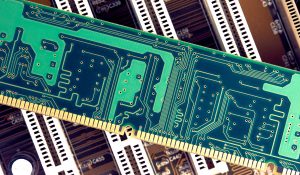
by T. N. Vijaykumar on Dec 21, 2017 | Tags: Conference, Opinion
I discuss some key issues with our review process and give some suggestions for the PC chairs and PC members.
Read more...

by Hadi Esmaeilzadeh and Michael Bedford Taylor on Dec 18, 2017 | Tags: Hardware, Open Source
Open-source software has become so entrenched in the software development ecosystem that major services (e.g., the Facebook cloud service) and products (e.g., the Android mobile operating system) rely almost exclusively upon open-source components and tools. This...
Read more...

by Yan Pei, Swarnendu Biswas, Don Fussell, and Keshav Pingali on Dec 12, 2017 | Tags: Data fusion, Kalman filters, Measurements
Kalman filtering shows us how to fuse noisy measurements.
Read more...

by David Wood on Dec 4, 2017 | Tags: Opinion
The computer architecture community is best served when its elected leadership provides strong guidance to and oversight of our flagship conferences. This has long been the case for ACM SIGARCH, which co-sponsors ISCA and ASPLOS, and IEEE TCCA, which (co-)sponsors...
Read more...

by Scott Mahlke and Onur Mutlu on Nov 22, 2017 | Tags: Conference, Diversity
To all those who attended the MICRO business meeting diversity discussion and/or have followed it on this blog/twitter, we wanted to provide an update to the MICRO and broader computer architecture communities as to the next steps. First off, we want to thank everyone...
Read more...

by Steve Swanson on Nov 7, 2017 | Tags: Errors, Memory, Persistent, Storage
Integrating non-volatile main memories (NVMMs) into the storage/memory hierarchy make data integrity a critical design consideration. Protecting data in NVMM is a complex problem: media errors and software bugs can corrupt data and the reliability of each memory...
Read more...

by Olivier Temam with Luis Ceze, Joel Emer, and Karin Strauss on Nov 6, 2017 | Tags: ACM SIGARCH, Machine Learning, Vision
We are pleased to announce the creation of the ACM SIGARCH YouTube channel with recorded videos from the first workshop in the Visioning Series, the Workshop on Trends in Machine Learning co-held with ISCA 2017. The Visioning Series was launched this year to catalyze...
Read more...

by Tilman Wolf on Nov 1, 2017 | Tags: Distributed Systems, Energy, Security
Emerging cryptocurrencies, such as Bitcoin and Ethereum have reached market capitalizations in the billions of U.S. dollars and transactions volumes in the hundreds of millions of U.S. dollars per day according to coinmarketcap.com. The underlying technology of...
Read more...

by Yuan Xie on Oct 27, 2017 | Tags: Cache, Emerging Technology, Hardware, Memory, Persistent, Storage
Memory architecture is a key component of modern computer systems. Memory hierarchy importance increases with the advances in microprocessor performance. Traditional memory hierarchy design consists of embedded memory (such as SRAM and embedded DRAM) for on-chip...
Read more...

by Joe Devietti on Oct 23, 2017 | Tags: Conference
The 50th Annual International Symposium on Microarchitecture was held earlier this week in Cambridge, Massachusetts. Day One PC Chairs Joel Emer and Daniel Sanchez kicked things off by sharing some data on conference submissions and reviewing. MICRO-50 used a...
Read more...










